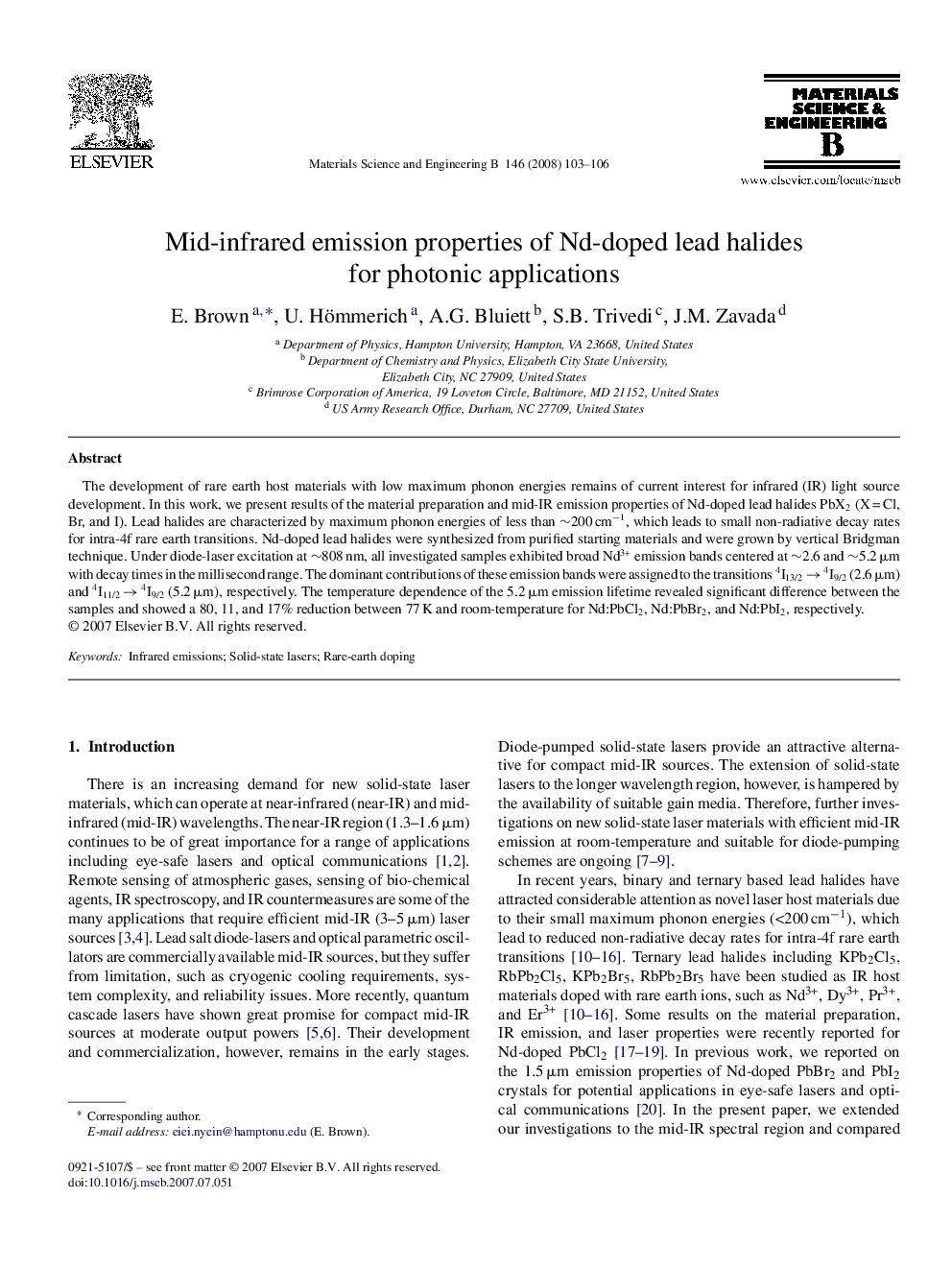| Article ID | Journal | Published Year | Pages | File Type |
|---|---|---|---|---|
| 1531144 | Materials Science and Engineering: B | 2008 | 4 Pages |
Abstract
The development of rare earth host materials with low maximum phonon energies remains of current interest for infrared (IR) light source development. In this work, we present results of the material preparation and mid-IR emission properties of Nd-doped lead halides PbX2 (X = Cl, Br, and I). Lead halides are characterized by maximum phonon energies of less than â¼200 cmâ1, which leads to small non-radiative decay rates for intra-4f rare earth transitions. Nd-doped lead halides were synthesized from purified starting materials and were grown by vertical Bridgman technique. Under diode-laser excitation at â¼808 nm, all investigated samples exhibited broad Nd3+ emission bands centered at â¼2.6 and â¼5.2 μm with decay times in the millisecond range. The dominant contributions of these emission bands were assigned to the transitions 4I13/2 â 4I9/2 (2.6 μm) and 4I11/2 â 4I9/2 (5.2 μm), respectively. The temperature dependence of the 5.2 μm emission lifetime revealed significant difference between the samples and showed a 80, 11, and 17% reduction between 77 K and room-temperature for Nd:PbCl2, Nd:PbBr2, and Nd:PbI2, respectively.
Keywords
Related Topics
Physical Sciences and Engineering
Materials Science
Electronic, Optical and Magnetic Materials
Authors
E. Brown, U. Hömmerich, A.G. Bluiett, S.B. Trivedi, J.M. Zavada,
